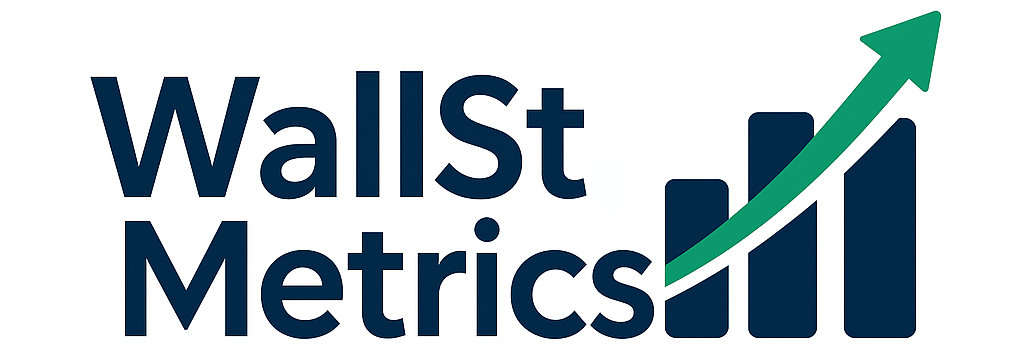Key Takeaways
- The 9-day and 21-day moving averages offer faster signals ideal for short-term traders.
- They help identify momentum shifts before the slower 50/200-day averages react.
- Combining short-term MAs with volume and price action enhances trade accuracy.
Why Short-Term Averages Matter More Than You Think
When traders hear the term “moving averages,” their minds often go straight to the popular long-term indicators like the 50-day or 200-day averages. These are widely used for identifying overarching trends and confirming major market direction. But if you’re a day trader or a short-term swing trader, those longer averages might be too slow to offer actionable insights in real time.
That’s where short-term moving averages—specifically the 9-day and 21-day—come into play. These faster indicators adapt more quickly to recent price movements, making them especially valuable in today’s volatile, fast-moving markets. They help traders detect shifts in momentum early, often signaling the beginning of a breakout or breakdown before the more common indicators even start to react.
Using the 9 and 21 EMAs can give you a significant timing advantage. Instead of waiting for the market to catch up, you’re already positioned when a trend starts forming. For active traders looking to enter and exit positions with precision, these short-term averages serve as a kind of early warning system—subtle, responsive, and incredibly powerful when combined with volume and price action.
In short, while the 50-day and 200-day lines are great for the big picture, the 9 and 21 can help you see what’s happening right now—and act before everyone else does.
The Speed Advantage – Why 9 and 21-Day Averages Can Give You an Edge
In the world of short-term trading, every moment counts. Traders who focus on daily or intraday timeframes know that momentum and timing are everything. That’s why using tools that respond quickly to market movements is essential—and this is exactly where the 9-day and 21-day Exponential Moving Averages (EMAs) shine.
Unlike longer-term averages that lag behind price, the 9 and 21 EMAs are more sensitive to recent price action. They smooth out the market’s noise without falling too far behind, helping traders stay aligned with the current trend as it unfolds—not after it’s already in motion.
Why Use the 9 and 21-Day EMAs?
- Faster Signals: These shorter-term EMAs react more swiftly to price fluctuations, giving traders earlier clues about potential reversals or breakout opportunities. This speed can mean the difference between entering a position at the start of a move or chasing it after it’s already halfway done.
- Momentum Confirmation: One of the most useful signals is the crossover. When the 9-day EMA crosses above the 21-day EMA, it often indicates that bullish momentum is picking up. Conversely, when the 9 dips below the 21, it can suggest bearish momentum. Many traders use this crossover as a clear, rule-based entry or exit signal.
- Trusted by the Trading Community: The 9 and 21 EMAs are widely followed, not only by human traders but also by algorithmic systems and trading bots. Because they’re so commonly used, these moving averages often become self-fulfilling—price tends to react around them simply because so many participants are watching the same levels.

Real-World Example: The SPY Crossover in March 2023
Let’s look at a practical example. In March 2023, the SPY (the ETF that tracks the S&P 500) experienced a clear 9/21 EMA crossover on the hourly chart. This early signal came well before the broader market indicators caught on. Over the next three trading sessions, SPY rallied significantly.
Traders who recognized and acted on the 9/21 crossover were able to capture the bulk of the move early—while others, relying on slower 50-day or 200-day indicators, were still waiting for confirmation. By the time those signals kicked in, the opportunity had largely passed.
The Problem with 50 and 200 in Fast Markets
The 50-day and 200-day moving averages are staples in many traders’ toolkits—and for good reason. They’re excellent at identifying long-term trends, smoothing out price action over weeks or even months, and helping investors stay aligned with the broader direction of the market. However, when it comes to fast-paced trading, such as intraday or short swing trades, these moving averages can be too slow to keep up.
The issue lies in lag. These longer-term averages respond to price changes gradually, meaning they tend to confirm moves after they’ve already happened. In rapidly moving markets, this delay can cost you. By the time a 50-day or 200-day moving average signals a breakout or a trend reversal, the most profitable part of the move may already be behind you. Traders who rely solely on these indicators for entry and exit signals often find themselves chasing the market rather than staying ahead of it.
Analogy: Speed vs. Stability
To put it in perspective, imagine the difference between a sports car and a freight train. The 9-day and 21-day EMAs are like sports cars—nimble, responsive, and quick to react to new road conditions. The 50-day and 200-day MAs, on the other hand, are like freight trains—powerful and stable, but slow to turn. They’re great for confirming direction over the long haul, but they won’t help you make sharp, timely maneuvers when the market shifts quickly.
So, When Should You Use the 50 and 200?
While they may not be ideal for fast trades, the 50-day and 200-day moving averages still have valuable roles:
- Long-Term Investors: These MAs help identify whether a stock or index is in a long-term uptrend or downtrend. They’re useful for filtering out short-term noise and focusing on the big picture.
- Portfolio Managers: Institutional investors often use these levels to guide macro-level decisions, such as rotating between asset classes or sectors.
- Rebalancing Strategies: For strategies that involve periodically adjusting a portfolio, the 50/200-day averages can provide helpful context for when to take profits, cut losses, or reallocate assets.
How to Use the 9 and 21-Day EMAs in Practice
Understanding the power of the 9-day and 21-day EMAs is one thing—using them effectively in real trades is another. While these moving averages are incredibly helpful, they shouldn’t be used in isolation. To increase your probability of success, it’s important to combine them with other key technical tools. Think of them as part of a team rather than solo indicators.
Here are three simple yet effective ways to boost your trading edge when using the 9 and 21 EMAs:

A moving average crossover can look promising, but without strong volume, the move might lack conviction. Volume is like the fuel behind a breakout. If the price pushes through a level or a crossover happens and it’s accompanied by rising volume, that tells you real buyers (or sellers) are behind the move. If volume is weak, it could be a false signal or a short-lived bounce.
Tip: Look for volume that is significantly higher than the average of the previous few candles. A breakout with a volume spike is often a sign of institutional interest.
📈 Candlestick Patterns for Context
Moving averages tell you about trend and direction, but candlesticks tell you how the market feels right now. When a bullish candlestick pattern (like an engulfing candle or hammer) forms near the 21-day EMA, it reinforces the signal. For example, if the price pulls back to the 21-day line and forms a bullish engulfing candle on strong volume, that’s often a great entry point in a continuing uptrend.
Tip: Use patterns like morning stars, bullish hammers, or engulfing candles near the 21 EMA to identify high-probability bounce areas.

When moving averages line up with key support or resistance levels, the signal becomes much stronger. For example, if the 21-day EMA aligns with a previous swing high or low, and price reacts at that level, you’ve got multiple technical factors working in your favor.
Tip: Use horizontal lines to mark prior highs/lows, and see if your EMAs are clustering near those levels. These are areas where buyers or sellers may step in again.

A Simple Strategy Using 9 and 21-Day EMAs
Let’s tie it all together into a straightforward game plan:
- Watch for the 9-day EMA to cross above or below the 21-day EMA.
- A bullish crossover (9 crossing above 21) suggests momentum is building to the upside.
- A bearish crossover (9 crossing below 21) signals a potential trend reversal or short setup.
- Confirm the signal with volume and candlesticks.
- Look for above-average volume and a bullish candle (such as a large green bar or engulfing pattern) forming at or just after the crossover.
- Manage your risk with a smart stop-loss.
- A good rule of thumb: place your stop-loss just below the 21-day EMA. This gives your trade some breathing room while protecting against a deeper trend reversal.
By combining moving averages with volume, candlesticks, and support/resistance, you’re no longer trading on just one signal—you’re stacking probabilities in your favor. This approach helps you avoid false breakouts and gives you more confidence in your entries and exits.
Smart Traders Use Smart Tools
In today’s fast-moving markets, information travels at lightning speed—and so does price. If you’re still relying primarily on slower indicators like the 50-day or 200-day moving averages for daily trading decisions, you could be missing out on critical opportunities or reacting after the fact. These traditional averages are excellent for analyzing long-term trends, but for traders who need precision and timely signals, they simply don’t keep up.
That’s where the 9-day and 21-day Exponential Moving Averages (EMAs) come into play. These faster indicators are designed to adapt quickly to price action, making them ideal for identifying early trend shifts, momentum surges, and potential breakout points. When used correctly, they act like a finely tuned radar—helping you spot changes before they show up on the broader market’s horizon.
Whether you’re day trading individual stocks, ETFs, or indices like the S&P 500, plotting the 9 and 21 EMAs on your chart is a smart starting point. Watch how price behaves around these lines—do pullbacks bounce off the 21 EMA? Does a crossover trigger a strong move? These observations can become the foundation for a rule-based, repeatable strategy that aligns with your trading goals.
The Bottom Line
When timing matters—and in daily trading, it always does—the 9-day and 21-day EMAs offer a clear advantage. Their speed, simplicity, and reliability make them essential tools for traders who want to act, not react. If you’re serious about sharpening your edge in the market, it’s time to move beyond the old playbook and embrace tools built for today’s trading pace.
Start testing them on your charts, build your strategy around them, and see how a faster signal can lead to smarter trades.
FAQs
Q: Should I use Simple or Exponential MAs?
A: Exponential MAs (EMAs) are better for daily trading because they respond more quickly to recent prices.
Q: Can I use 9/21 on any chart?
A: Yes, but they work best on daily or intraday charts. For long-term investing, consider longer-term MAs.
Q: Are moving averages reliable on their own?
A: Not entirely. They’re most powerful when combined with volume, trendlines, and price action.








